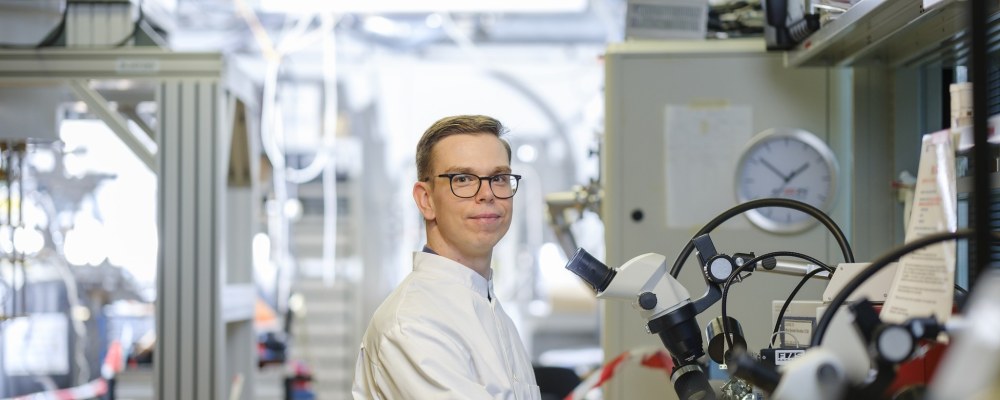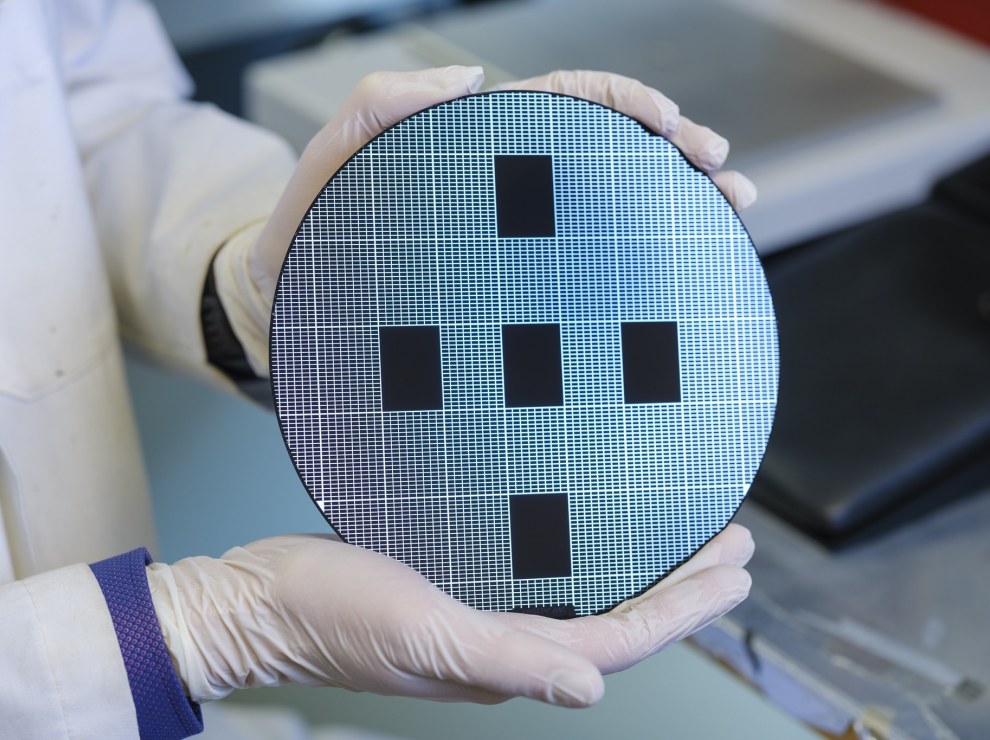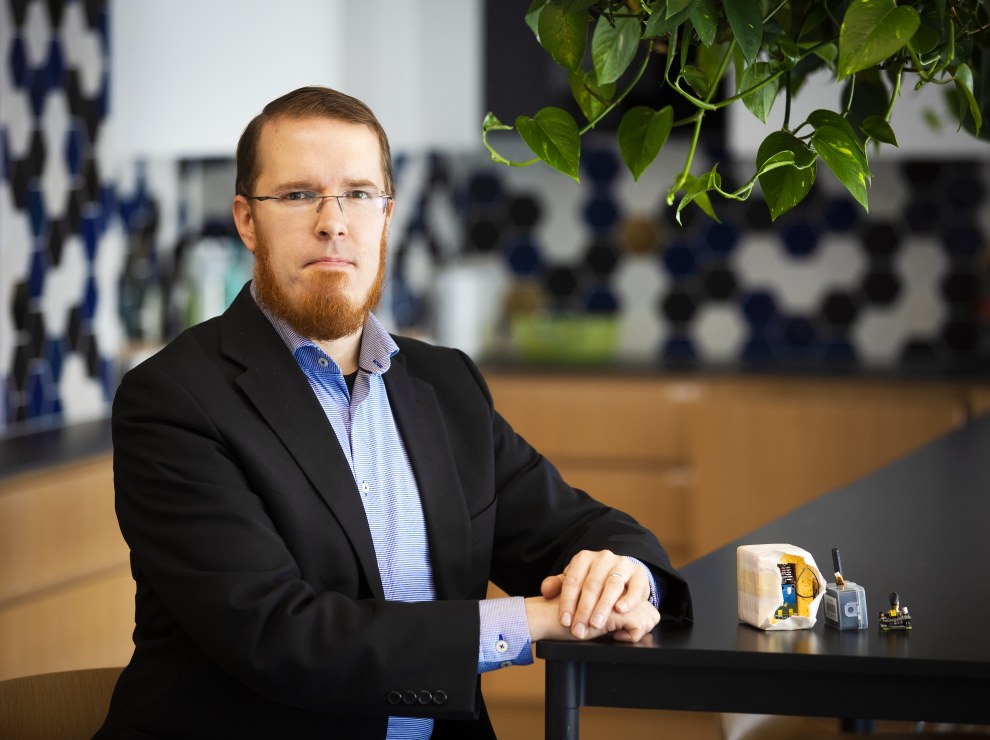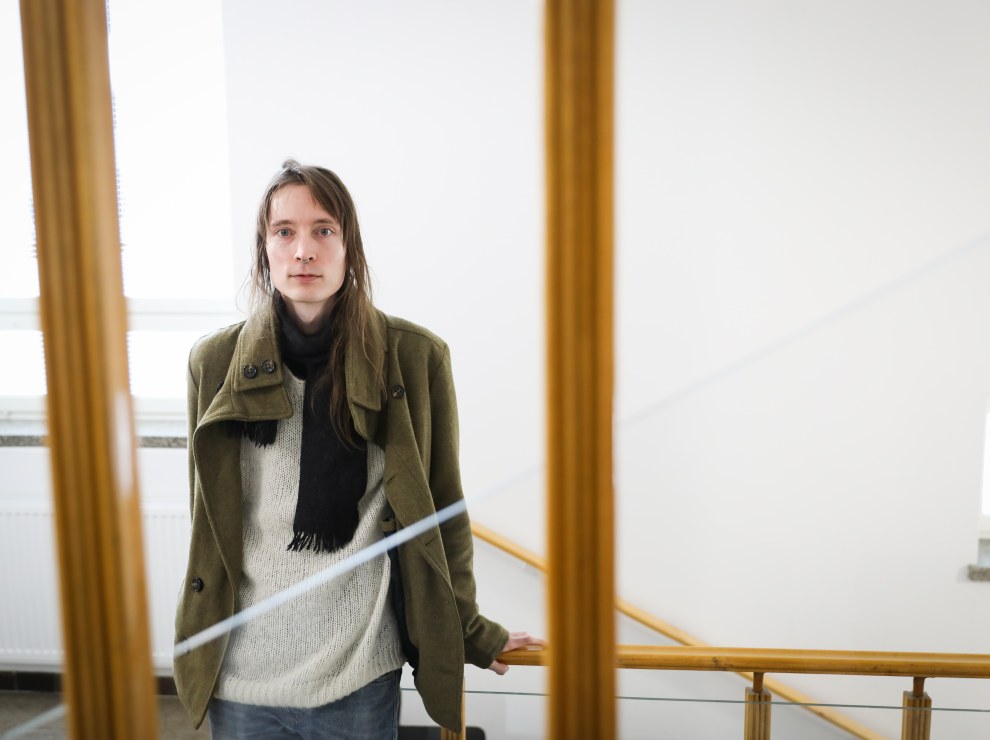
Every year, the Academic Engineers and Architects in Finland TEK, Tekniska Föreningen i Finland TFiF and the Academic Association for Mathematics and Natural Sciences MAL present awards for the best doctoral thesis of the year, the best master’s thesis in engineering or architecture and the best master’s thesis in mathematics, physics or computer science. The awards will be presented today in Helsinki.
Lossless photodetector is already making its way into the world
The award for the best doctoral thesis was given to Juha Heinonen from the Aalto University School of Electrical Engineering, Department of Electronics and Nanoengineering.
In his doctoral thesis titled “High-sensitivity photodiodes using black silicon and induced junction”, Heinonen developed a new type of silicon-based photodetector. The detector was made using techniques that have proven promising in previous solar cell research.

“The detector is based on a nanostructure, which is non-reflecting and therefore appears black, hence the name black silicon. It is coated with a thin-film using atomic layer deposition (ALD), a technique invented in Finland. The result was an almost lossless photodetector, which can detect virtually every photon that hits the detector, whether it is visible light or higher energy radiation. This near-ideal sensitivity is superior to all previous detectors, and a big part of my work focuses on understanding the mechanisms underlying this record sensitivity,” says Heinonen.
Heinonen was excited to study such a versatile topic.
“During my research, I was able to examine the semiconductor physics underlying the functions of the detector through simulations and measurements, but at the same time, I could also manufacture components with my own hands in a cleanroom.”
Another motivator was the clear link with numerous practical applications. Heinonen mentions X-ray imaging and smartwatches as examples.
“In X-ray imaging, the photodetector can improve patient safety, because greater sensitivity delivers equally high imaging quality with a smaller radiation dose. In smartwatches, optical heart rate measurement is based on observing the light that reflects off the skin, so a more sensitive detector enables an equally strong signal with a lower light intensity, therefore enabling longer battery life.”
Heinonen and his fellow researchers started the company ElFys Oy to commercialise the detectors – even before the doctoral thesis was finished.
“Commercialising the technology is off to a good start, as ElFys has already sold detectors to 58 customers in 14 different countries and we are now ramping-up mass production.”
In the future, Heinonen plans to focus on further developing the promising technology through his company.
TEK and TFiF presented Heinonen with an honorary certificate and an award of 7 500 euros. The award for the best doctoral thesis was given out for the 25th time this year.
The world’s most sensitive photodetector – watch Juha Heinonen's short interview
More environmentally friendly weather data
TEK and TFiF presented the award for the best master’s thesis in engineering or architecture in 2023 to Jari Leinonen from the LUT University School of Engineering Science, Industrial Engineering and Management.
In his thesis entitled “An environmentally friendly weather balloon system”, Leinonen looked at alternatives to the current weather balloon observation systems to make them more environmentally friendly. A weather balloon consists of a measuring instrument known as a radiosonde, a rubber balloon and a string.

“The aim was to reduce the environmental load caused by radiosondes and weather balloons,” says Leinonen.
Leinonen says that he has always been interested in science, technology and developing existing solutions further. He became interested in weather balloons a few years ago.
“My goal was to one day send one off, to observe the stratosphere. I asked my supervisors if I could write my thesis on weather balloons and, since LUT specialises in solutions that maintain the balance of nature, it felt natural for both the university and myself to combine weather observation technology and environmental friendliness in my research. I received excellent support at this stage from LUT to help me reach my goal.”
In his master’s thesis, Leinonen proposes a number of improvements to current weather observation instruments, which are based on radiosonde technology, and to the measuring process. For example, instead of just the tower of the launch station, stations receiving radio data across the country could be used to measure the flight trajectory of radiosondes. The data depicting the movements of radiosondes could also be made public so that anyone could retrieve and return fallen radiosondes. The proposed changes can be implemented with reasonable costs, using existing technology and know-how from around the world.
The thesis draws from the knowledge of professionals in meteorology, space and industry, and the results may be used anywhere in the world, including the polar regions. The results can be utilised, for instance, by meteorological institutes and companies, but also by private individuals who are interested in environmental issues.
“In September 2023, Vaisala released a new version of its RS41 radiosonde, which contains 66% less plastic and has a shell and a string that are made from biodegradable material. So, positive change has already begun. Vaisala and the Bureau of Meteorology in Australia were also key sources in my master’s thesis.”
Following his thesis, Leinonen is continuing his development work at Teosto, where he works as Business Development Manager.
TEK and TFiF presented Leinonen with an honorary certificate and an award of 5 000 euros.
Detecting Parkinson’s disease from EEG data
The award for the best master’s thesis in mathematics, physics or computer science was presented to Ilkka Suuronen from the University of Turku, Department of Computing. The name of the thesis is “Parkinsonin taudin tunnistaminen elektroenkefalogrammista koneoppimisteknologian avulla” (“The use of machine learning technology for detecting Parkinson’s disease from EEG data”).
Suuronen examined how accurately a machine learning algorithm can distinguish between healthy subjects and subjects with Parkinson's disease based on EEG data when using a limited number of EEG channels in different regions of the brain. EEG is short for electroencephalogram. In an EEG test, electrodes are attached to the head to measure the electrical impulses of the brain.

“The idea is to simulate a situation where the EEG has been recorded using a relatively small number of electrodes, which could reduce the preparation time of EEG tests. The electrodes were selected using a greedy search algorithm, meaning that at each stage of the process, the algorithm chooses the electrode that most improves classification accuracy, or the quality variables calculated from its signal, and adds it to the selection,” says Suuronen.
Suuronen discovered this interesting topic during their summer job at the University of Turku and learned more about the topic with the help of the future thesis supervisors and other staff.
“I want to thank Antti Airola, Tapio Pahikkala, Henry Railo and Mika Murtojärvi – I couldn’t have written this thesis without them.”
The outcome of the thesis was that the algorithm learned to distinguish between a person with Parkinson’s disease and a healthy subject with an average classification accuracy of 73%. If data collected by only ten electrodes was used, the result was about one per cent weaker.
“The purpose of my thesis is to improve our understanding of Parkinson's disease. In the long run, I naturally hope that my research would also facilitate the development of clinical applications.”
Suuronen has continued to work with the theme of machine learning even after their thesis.
“I’m currently working as a doctoral researcher in the FinnBrain Neuroimaging Lab at the University of Turku where I conduct machine learning-based analysis mainly with MRI data.”
TEK and MAL presented Suuronen with an honorary certificate and an award of 5 000 euros.
Thesis awards 2023
TEK and TFiF presented the doctoral thesis award for the first time in 1999 to encourage engineering and architecture graduates to pursue further studies. The prize also has the aim of raising the profile of postgraduate studies.
TEK and TFiF have been giving out the award for the best master’s thesis in engineering or architecture since 1986. One of the aims of the award is to encourage the acquisition of comprehensive skills among students in these fields.
TEK and MAL have been giving out the award for the best master’s thesis in mathematics, physics or computer science since 2007. The idea is to highlight the importance of these disciplines in Finnish society.
“These theses demonstrate the excellent technological development that is done in Finland. It’s a pleasure to be able to present these awards and to highlight this work and the people behind it,” says Mikko Särelä, Expert for Industrial and Innovation Policy at TEK.
“The versatile skills, dedication and expertise that come across from these theses is wonderful to witness. The results of the theses benefit a wide range of individuals, companies and society as a whole. A warm congratulations to the winners,” says CEO of TFIF Annika Nylander.